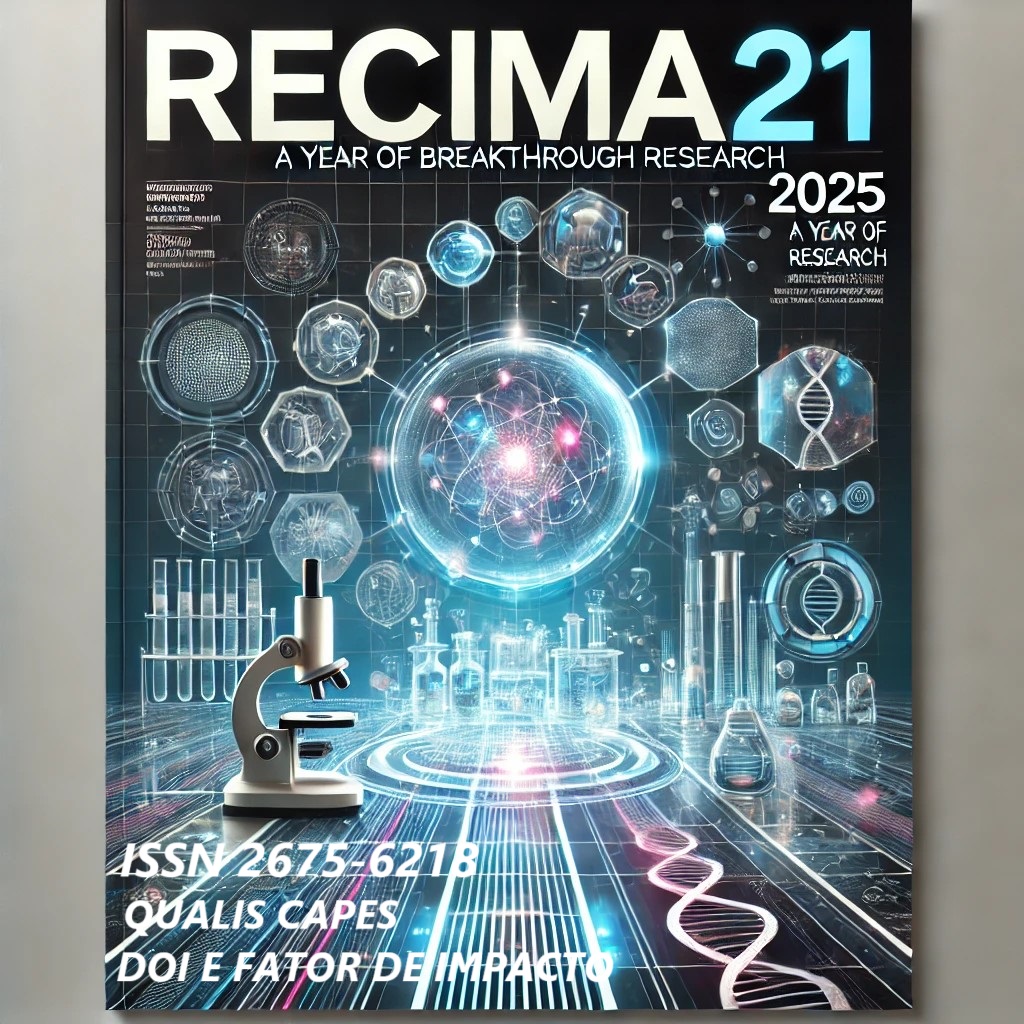FEELINGS: PROTOTYPING A DATA-DRIVEN PLATFORM FOR EMOTIONAL MONITORING AND PERSONALIZED PSYCHOTHERAPEUTIC INTERVENTION
DOI:
https://doi.org/10.47820/recima21.v6i7.6603Keywords:
Digital mental health, User experience, User-centered design, Usability, Nielsen HeuristicsAbstract
The increasing prevalence of mental disorders in recent decades, intensified by social, economic, and technological factors, highlights the need for innovative strategies to expand access to psychological care. In this context, digital solutions have shown promise, especially those that combine usability, empathy, and professional follow-up. This study aimed to develop and evaluate a functional prototype of the Feelings application, focused on emotional self-monitoring and digital psychotherapeutic support. The research was conducted through a qualitative, applied, and exploratory approach, grounded in user-centered design principles and Nielsen's usability heuristics. The methodology included an integrative literature review, requirements elicitation, interface modeling, digital prototyping, and evaluation with real users, including heuristic analysis and usability testing. The proposed system features distinct flows for patients and psychology professionals, encompassing functionalities such as emotional journaling, graphical mood visualization, appointment scheduling, and asynchronous communication. Results indicated a high level of acceptability, clarity, and adherence to usability principles, as well as positive potential for promoting emotional care engagement. The study contributes to the field of digital mental health by proposing a technically grounded, ethically guided solution centered on real user needs.
Downloads
References
BALIEIRO, Anderson Fernandes; PINTO, Giuliano Scombatti. A IMPORTÂNCIA DO LEVANTAMENTO DE REQUISITOS NO DESENVOLVIMENTO DE SOFTWARES. Revista Interface Tecnológica, Taquaritinga, SP, v. 21, n. 1, p. 28–39, 2025. DOI: 10.31510/infa.v21i1.1845. Disponível em: https://revista.fatectq.edu.br/interfacetecnologica/article/view/1845. Acesso em: 9 jul. 2025. DOI: https://doi.org/10.31510/infa.v21i1.1845
BMJ MENTAL HEALTH. Clinical review of user engagement with mental health smartphone apps: evidence, theory and improvements. Evidence-Based Mental Health, v. 21, n. 3, p. 116–119, 2018.
BRASIL. MINISTÉRIO DA SAÚDE. Saúde mental. Brasília: Ministério da Saúde, 2023. Disponível em: https://www.gov.br/saude/pt-br/assuntos/saude-de-a-a-z/s/saude-mental. Acesso em: 19 jun. 2025.
FARIA RODRIGUES, T. D. DE F.; SARAMAGO DE OLIVEIRA, G.; ALVES DOS SANTOS, J. AS PESQUISAS QUALITATIVAS E QUANTITATIVAS NA EDUCAÇÃO. Revista Prisma, v. 2, n. 1, p. 154-174, 25 dez. 2021. Disponível em: https://revistaprisma.emnuvens.com.br/prisma/article/view/49/41. Acesso em: 08 jul. 2025.
KÖNIG, Emanuele; BOHN, Patrícia Raquel; LIBÂNIO, Cláudia de Souza. Relações entre design, acessibilidade e inclusão no contexto da saúde. Human Factors in Design, Florianópolis, v. 11, n. 22, p. 020–043, 2022. DOI: 10.5965/2316796311222022020. Disponível em: https://www.periodicos.udesc.br/index.php/hfd/article/view/21256. Acesso em: 8 jul. 2025. DOI: https://doi.org/10.5965/2316796311222022020
MOHR, David C. et al. The behavioral intervention technology model: An integrated conceptual and technological framework for eHealth and mHealth interventions. Journal of Medical Internet Research, v. 16, n. 6, p. e146, 2014. DOI: https://doi.org/10.2196/jmir.3077
NIELSEN, Jakob. Usability engineering. Boston: Academic Press, 1994. DOI: https://doi.org/10.1016/B978-0-08-052029-2.50009-7
NORMAN, Donald A. O design do dia a dia. Brasil: Rocco, 2006.
OPAS – ORGANIZAÇÃO PAN-AMERICANA DA SAÚDE. Pandemia de COVID-19 desencadeia aumento de 25% na prevalência de ansiedade e depressão em todo o mundo. [S. l.]: OPAS, 2 mar. 2022. Disponível em: https://www.paho.org/pt/noticias/2-3-2022-pandemia-covid-19-desencadeia-aumento-25-na-prevalencia-ansiedade-e-depressao-em. Acesso em: 18 jun. 2025.
PFLEEGER, Shari Lawrence; ATLEE, Joanne M. Engenharia de software: teoria e prática. 3. ed. São Paulo: Pearson Prentice Hall, 2010.
PREECE, Jennifer; ROGERS, Yvonne; SHARP, Helen. Design de interação: além da interação homem-computador. 3. ed. Porto Alegre: Bookman, 2013.
PRESSMAN, Roger S. Engenharia de software. 7. ed. São Paulo: McGraw Hill Brasil, 2016.
SALES, S. S.; COSTA, T. M. da; GAI, M. J. P. Adolescents in the Digital Age: Impacts on Mental Health. Research, Society and Development, [S. l.], v. 10, n. 9, p. e15110917800, 2021. DOI: 10.33448/rsd-v10i9.17800. Disponível em: https://rsdjournal.org/index.php/rsd/article/view/17800. Acesso em: 12 jun. 2025. DOI: https://doi.org/10.33448/rsd-v10i9.17800
SOMMERVILLE, Ian. Engenharia de software. 9. ed. São Paulo: Pearson Addison Wesley, 2011.
THOMAS, L. T.; LEE, C. M. Y.; MCCLELLAND, K. et al. Health workforce perceptions on telehealth augmentation opportunities. BMC Health Services Research, v. 23, n. 182, 2023. DOI: https://doi.org/10.1186/s12913-023-09174-4
TOROUS, John et al. Clinical review of user engagement with mental health smartphone apps: evidence, theory and improvements. Evidence-Based Mental Health, v. 21, n. 3, p. 116–119, 2018. DOI: https://doi.org/10.1136/eb-2018-102891
UXDESIGN BRASIL. 10 heurísticas de Nielsen para o design de interface. UX Design Brasil, 02 ago. 2017. Disponível em: https://brasil.uxdesign.cc/10-heur%C3%ADsticas-de-nielsen-para-o-design-de-interface-58d782821840. Acesso em: 19 jun. 2025.
WHO – WORLD HEALTH ORGANIZATION. Mental Health Atlas 2021. Geneva: WHO, 2021. Disponível em: https://www.who.int/publications/i/item/9789240036703. Acesso em: 12 jun. 2025.
WIDIANTI, Alfi Kurinita et al. UI/UX design based mental health application using design thinking method. ICONBIT - International Conference on Digital Business Innovation and Technology Management, v. 1, n. 1, 2024.
Downloads
Published
License
Copyright (c) 2025 RECIMA21 - Revista Científica Multidisciplinar - ISSN 2675-6218

This work is licensed under a Creative Commons Attribution 4.0 International License.
Os direitos autorais dos artigos/resenhas/TCCs publicados pertecem à revista RECIMA21, e seguem o padrão Creative Commons (CC BY 4.0), permitindo a cópia ou reprodução, desde que cite a fonte e respeite os direitos dos autores e contenham menção aos mesmos nos créditos. Toda e qualquer obra publicada na revista, seu conteúdo é de responsabilidade dos autores, cabendo a RECIMA21 apenas ser o veículo de divulgação, seguindo os padrões nacionais e internacionais de publicação.













